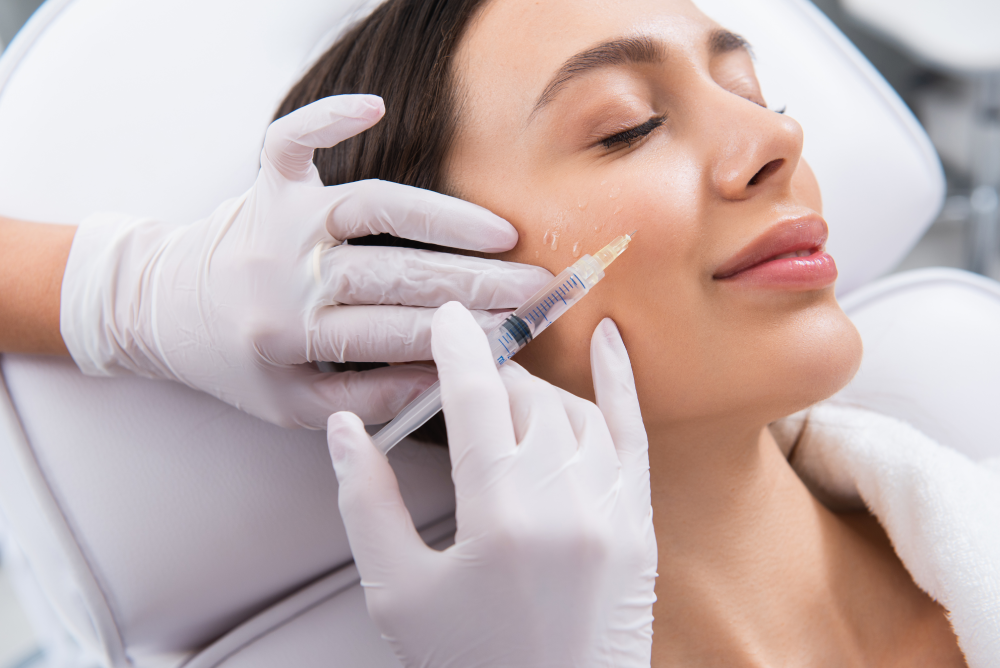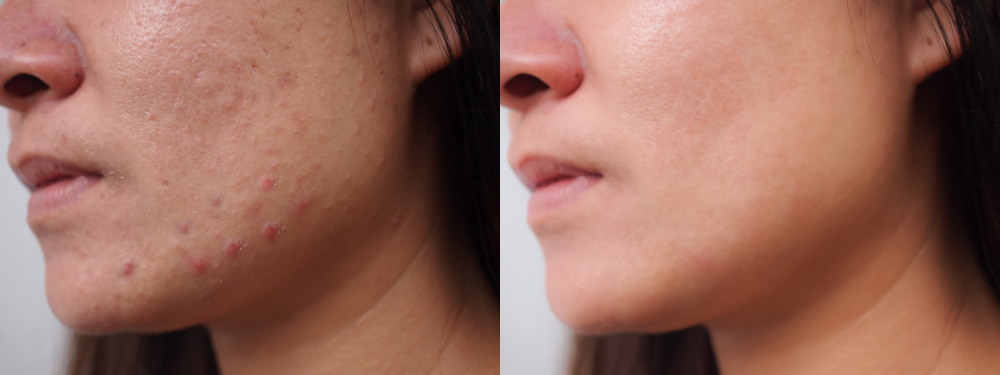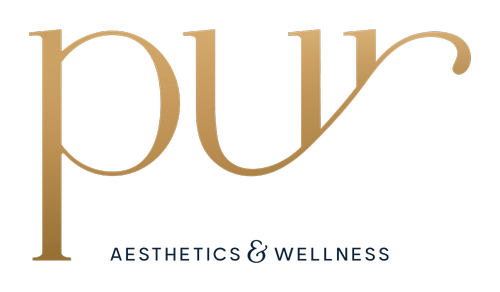Acne scars don’t just fade with time—they often linger, telling stories we’d rather forget. What many people don’t realize is that dermal fillers—yes, the same ones used for plumping lips or contouring cheekbones—can also help restore smoothness and confidence to scarred skin.
If you’ve struggled to minimize the appearance of scars with creams, peels, or lasers, you’re not alone. Today, more people are discovering the transformative potential of dermal fillers to not only reduce scar visibility but also rejuvenate the surrounding skin.
Before you give up on achieving a smoother, more even complexion, let’s explore how dermal fillers can become your secret weapon against acne scars. Keep reading—you might just discover the solution you’ve been searching for.
What Are Acne Scars?
To fully appreciate how dermal fillers can help, it’s important to understand what acne scars are and why they form.
Acne scars are permanent textural changes and indentations that occur on the skin as a result of severe acne. They form when inflamed acne lesions penetrate deeply into the skin and damage the tissues beneath. As the acne clears, the skin attempts to repair itself, often resulting in either an overproduction or a loss of collagen.
The two most common types of acne scars include:
- Atrophic scars: Depressed or indented scars that sit below the surrounding skin (like boxcar, ice pick, and rolling scars).
- Hypertrophic scars: Raised scars caused by excess collagen production.
Atrophic scars, in particular, respond well to dermal filler treatments.
Why Do Acne Scars Form?
Several factors influence why some people develop acne scars while others don’t:
- Severity of acne: Deep, cystic acne is more likely to cause lasting scars.
- Delay in treatment: Waiting too long to treat active acne increases the risk of scarring.
- Skin picking or squeezing: Manipulating blemishes can push bacteria deeper and worsen scarring.
- Genetics: If close family members have acne scars, your chances may be higher.
- Skin type and tone: Certain skin types may be more prone to discoloration or textural changes.
No matter the cause, there’s good news—dermal fillers can help restore a smoother skin surface. At Pur Aesthetics and Wellness, we offer customized solutions to address your unique scar concerns.
What Are Dermal Fillers?
Dermal fillers are injectable gels commonly made with hyaluronic acid (HA), a substance naturally found in your skin. Other fillers may contain calcium hydroxylapatite or poly-L-lactic acid, but hyaluronic acid fillers like Juvederm and Restylane are the most popular for scar treatment.
These fillers are typically used for:
- Smoothing wrinkles and fine lines
- Restoring lost facial volume
- Enhancing lips and cheeks
But fillers have another superpower—they can fill and lift depressed scars, improving skin texture and making scars less noticeable.

How Dermal Fillers Improve the Appearance of Scars
When it comes to treating scars—especially atrophic or indented types—dermal fillers offer more than just temporary cosmetic improvement. They can help rehabilitate the skin in multiple ways, blending artistry with science to promote both immediate results and long-term skin health.
Here’s how:
1. Restoring Lost Volume Beneath the Scar
Most atrophic scars form because of lost volume under the skin. Acne inflammation damages the tissue, leaving depressions that don’t heal evenly.
Dermal fillers—especially hyaluronic acid-based ones like Juvederm and Restylane—work by replacing this lost volume. The filler lifts the indented scar to the level of the surrounding skin, instantly reducing shadowing and creating a smoother appearance.
By strategically placing filler beneath the scar, a skilled injector can almost “erase” the indentation without affecting the natural contours of your face.
2. Stimulating Collagen Production for Long-Term Benefits
Beyond simply filling, many modern facial fillers stimulate the body’s own collagen production. Collagen is the protein responsible for maintaining skin structure, firmness, and elasticity.
When fillers trigger new collagen growth, the skin starts to rebuild itself from within. This means that even after the filler material gradually dissolves (which can take 6 to 18 months depending on the product), patients often notice lasting improvement.
With repeat treatments, some patients require less filler over time as the skin naturally rejuvenates.
3. Smoothing Skin Texture and Improving Elasticity
Dermal fillers don’t just add volume—they also help smooth the skin’s surface. By elevating the scarred areas, fillers minimize the rough or uneven texture that often makes scars more noticeable, especially in bright light or high-definition photos.
Additionally, as fillers attract water to the treated areas, they hydrate and plump the skin, improving its overall elasticity and making it look healthier and more resilient.
4. Customizable Results for Each Unique Scar
No two scars—or faces—are identical. Dermal fillers offer a fully customizable solution, with your provider carefully selecting the type, amount, and placement of filler to suit your skin’s needs.
For example:
- Small, shallow scars may require only a tiny amount of a soft filler for subtle smoothing.
- Larger or deeper scars may benefit from thicker fillers placed deeper under the skin for more robust lifting and volume replacement.
This precise approach allows for natural-looking results tailored to each patient’s unique scar patterns and skin structure.
5. Immediate, Noticeable Improvement
Unlike laser treatments or microneedling, which can take weeks or months to reveal final results, dermal fillers offer immediate visual improvement. Many patients see a dramatic reduction in scar depth and visibility right after treatment.
This quick turnaround is especially appealing for those preparing for special events or who simply want faster results without prolonged downtime.
6. Minimal Downtime and Low Risk
One of the most significant advantages of dermal fillers for scar correction is the minimal recovery time. Most patients experience only mild swelling or tenderness at the injection sites—symptoms that typically resolve within 24 to 48 hours.
Compared to surgical scar revision or ablative laser resurfacing, which often require extensive downtime and carry a higher risk of side effects, fillers are a far more convenient option for busy lifestyles.
7. Safe and Reversible Treatment
Hyaluronic acid fillers, such as Juvederm and Restylane, have an excellent safety record when administered by qualified providers. Plus, they offer the reassurance of reversibility.
If for any reason the results don’t meet expectations, a special enzyme (hyaluronidase) can dissolve the filler safely and effectively. This makes dermal fillers a low-risk, high-reward option for scar management.
8. Compatible with Other Treatments
Dermal fillers can be combined with other skin therapies to maximize results. Many patients use them alongside:
- Microneedling to stimulate collagen and improve overall skin texture.
- Chemical peels to address hyperpigmentation or discoloration around the scars.
- Laser resurfacing for additional smoothing and skin tightening.
This integrated approach allows your aesthetic provider at Pur Aesthetics and Wellness to create a comprehensive scar treatment plan tailored to your skin’s unique needs and goals.
9. Emotional and Psychological Impact
Finally, it’s essential to recognize the emotional transformation that often comes with cosmetic improvement. Scars can deeply affect self-esteem and social confidence. By softening or eliminating these reminders of past skin struggles, dermal fillers can empower patients to feel more comfortable and self-assured in their daily lives.
Many report feeling freer to engage in social activities, pose for photos, and even go makeup-free—everyday moments that once felt daunting.

Let’s Talk About Your Skin Goals
At Pur Aesthetics and Wellness in Granger, IN, we specialize in designing customized treatment plans to help each patient look and feel their best. Whether you’re dealing with deep acne scars or mild indentations, our team can evaluate your skin and recommend the best approach.
Dermal fillers might be your first step toward smoother, healthier-looking skin—but they can also be part of a larger skin rejuvenation strategy. We’ll work with you to create a plan that fits your goals, timeline, and budget.
Call us today to schedule your appointment!

